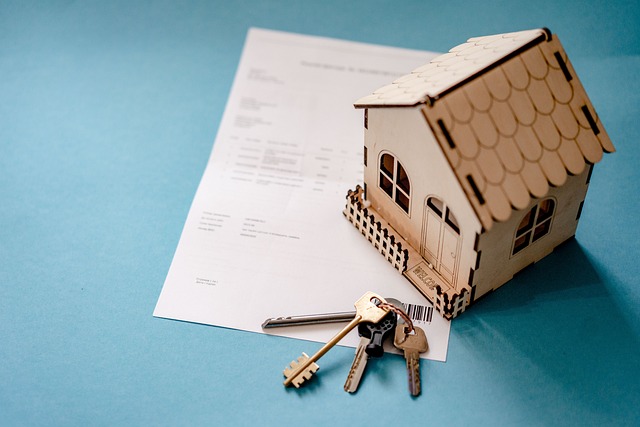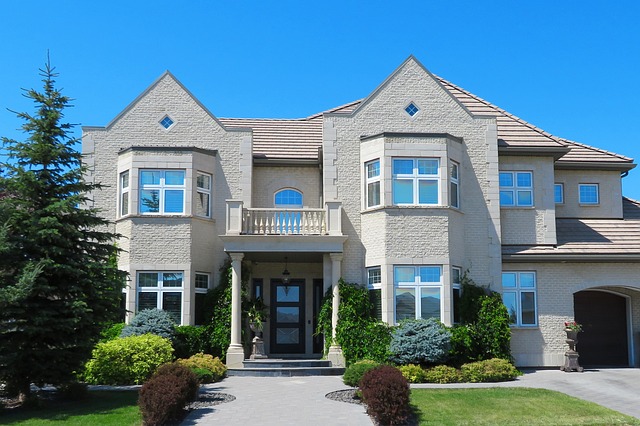The Address Occupant Lookup (AOL) process, crucial for organizations' accurate, up-to-date data, is evolving from manual, inefficient methods to technology-driven solutions. Traditional shortcomings like data accuracy issues, timeliness, and manual errors are being addressed by emerging technologies like IoT, smart home automation, blockchain, Machine Learning (ML), and Artificial Intelligence (AI). These innovations offer real-time, reliable information, streamlining AOL, enhancing accuracy, and improving efficiency across various sectors, including property management, emergency services, and regulatory compliance.
In today’s digital age, efficient address occupant lookup is paramount for streamlined operations. However, traditional methods face significant challenges and limitations, prompting a search for innovative alternatives. This article explores cutting-edge solutions that revolutionize address occupant data management. From blockchain’s decentralized approach to smart contracts’ efficiency and the power of AI, these emerging technologies offer enhanced accuracy and speed. We present real-world case studies demonstrating successful implementations, paving the way for future advancements in address occupant lookup.
- Understanding Address Occupant Lookup: The Current Scenario
- Challenges and Limitations of Traditional Methods
- Emerging Alternatives: Technology-Driven Solutions
- Blockchain: A Decentralized Approach to Data Management
- Smart Contracts and Their Role in Streamlining Lookups
- Machine Learning and AI: Enhancing Accuracy and Efficiency
- Case Studies: Successful Implementations of Alternative Methods
Understanding Address Occupant Lookup: The Current Scenario

Address Occupant Lookup (AOL) is a critical process for any organization or service provider that relies on accurate and up-to-date information about those occupying residential or commercial spaces. It involves identifying and verifying the occupants’ details, including names, contact information, and other relevant data. This process is essential for various reasons, from marketing and customer engagement to safety, security, and regulatory compliance.
In today’s digital age, the traditional methods of AOL, which often involve manual paperwork and physical verifications, are becoming increasingly inefficient and time-consuming. As a result, many organizations are exploring alternative options to streamline this process, enhance accuracy, and improve overall effectiveness. These alternatives leverage technology, data analytics, and innovative solutions to provide real-time, reliable occupant information, thereby addressing the challenges posed by the current scenario of AOL.
Challenges and Limitations of Traditional Methods

The traditional methods of Address Occupant Lookup (AOL) have long been the go-to solution for identifying residents or occupants associated with specific addresses. However, these conventional approaches come with inherent challenges and limitations that can hinder their effectiveness. One primary issue is data accuracy and timeliness; outdated records or incomplete databases may result in incorrect or inaccessible occupant information, especially in rapidly changing urban areas.
Additionally, traditional AOL processes often rely on manual data entry and verification, which is not only time-consuming but also prone to human errors. This can lead to delays in providing up-to-date resident details, particularly in large-scale operations like property management or emergency response services. The lack of digital integration also limits the ability to scale and share information efficiently across different stakeholders, creating silos that impede seamless communication and coordination.
Emerging Alternatives: Technology-Driven Solutions

In today’s digital age, emerging technologies offer promising alternatives to traditional Address Occupant Lookup methods. Innovative solutions like real-time location tracking, smart home automation, and advanced data analytics are revolutionizing how we identify and verify occupant information. These technology-driven approaches provide not only efficiency gains but also enhanced security and accuracy in managing building access and occupancy.
For instance, implementing IoT (Internet of Things) devices within buildings allows for continuous monitoring of occupant presence through sensors and smart appliances. This data can be seamlessly integrated into access control systems, enabling automated lookup processes that eliminate manual efforts. Additionally, machine learning algorithms can analyze patterns and trends to predict occupancy changes, further streamlining the lookup procedure and ensuring optimal resource allocation.
Blockchain: A Decentralized Approach to Data Management

In today’s digital age, the need for efficient and secure data management has led to innovative solutions like blockchain technology. When applied to Address Occupant Lookup (AOL), blockchain offers a decentralized approach that enhances security and transparency. Unlike traditional centralized systems, where data is stored in a single location vulnerable to cyberattacks, blockchain distributes data across multiple nodes, making it nearly impossible for unauthorized access or tampering.
Each transaction or update in the AOL system becomes a permanent, transparent record on the blockchain. This ensures that history of occupant changes, lease agreements, and other relevant information remains unalterable and easily verifiable. The decentralized nature of blockchain also facilitates seamless collaboration among stakeholders, such as property managers, tenants, and landlords, ensuring all parties have access to the same accurate data in real-time.
Smart Contracts and Their Role in Streamlining Lookups

Smart contracts are transforming the way we manage and streamline various processes, including address occupant lookup. These self-executing agreements with predefined rules encoded into smart contracts on a blockchain offer a secure and efficient solution for verifying occupancy and retrieving relevant data. By leveraging smart contracts, organizations can automate repetitive tasks associated with traditional lookup methods, reducing manual effort and potential errors.
In the context of address occupant lookup, smart contracts enable seamless and transparent exchanges of information. When a new tenant moves in or an existing one moves out, the transaction details are recorded on the blockchain through a smart contract. This ensures that the data is accurate, tamper-proof, and readily accessible to authorized parties. Moreover, smart contracts can facilitate secure communication between landlords, property managers, and tenants, streamlining the entire lookup process and enhancing overall efficiency.
Machine Learning and AI: Enhancing Accuracy and Efficiency

In today’s digital era, Machine Learning (ML) and Artificial Intelligence (AI) are revolutionizing various industries, including real estate and property management. When it comes to Address Occupant Lookup, these technologies offer significant advantages in terms of accuracy and efficiency. ML algorithms can analyze vast datasets to identify patterns and make precise predictions about occupant information based on historical data. This not only speeds up the lookup process but also minimizes errors often associated with manual verification.
AI-powered systems can continuously learn and adapt, improving their performance over time. They can consider multiple factors, such as occupancy history, lease agreements, and demographic data, to provide comprehensive insights into who occupies a particular address. This enhanced accuracy ensures that property managers and stakeholders have reliable information at their fingertips, streamlining operations and facilitating better decision-making processes related to Address Occupant Lookup.
Case Studies: Successful Implementations of Alternative Methods

In recent years, several organizations have successfully adopted alternative approaches to traditional Address Occupant Lookup methods, showcasing innovative solutions for efficient and accurate data management. For instance, a leading real estate firm implemented a smart building technology system that integrates advanced sensors and IoT devices. This implementation enabled them to track occupant movement within the premises in real-time, automatically updating the address and occupancy data. By utilizing machine learning algorithms, the system could identify patterns, predict occupancy changes, and even anticipate maintenance needs, resulting in significant improvements in operational efficiency.
Another notable case involves a university campus that implemented a digital identity management system. This system utilized biometric authentication, allowing students and staff to gain access to facilities using their unique physical characteristics. The data collected from this process provided an accurate and up-to-date view of building occupancy without relying heavily on manual lookups. This method not only enhanced security but also streamlined administrative processes, ensuring a seamless experience for the campus community. These successful implementations highlight the potential of alternative methods in revolutionizing Address Occupant Lookup practices.
In light of the current challenges and limitations of traditional methods for Address Occupant Lookup, exploring alternative solutions is more crucial than ever. The article has delved into several promising technology-driven approaches, such as blockchain’s decentralized data management, smart contracts’ efficiency, and machine learning’s accuracy enhancement. These emerging alternatives not only streamline processes but also bolster data security and reduce errors. Through real-world case studies, it’s evident that successful implementations of these innovative methods can significantly improve address lookup accuracy and overall occupant management. By embracing these technological advancements, organizations can revolutionize their Address Occupant Lookup practices.



